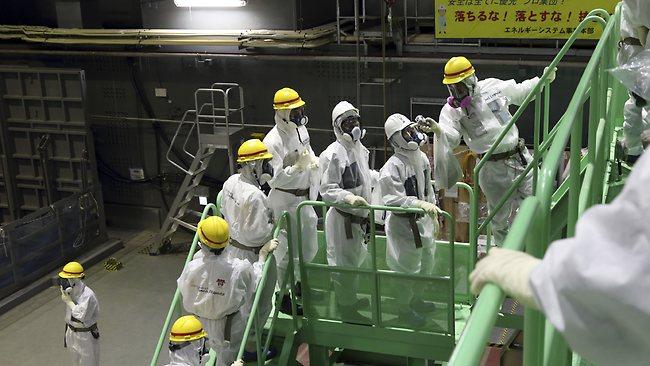Fuel-rod removal puts nuclear clean-up at most critical stage
ANY day now, the Fukushima Daiichi nuclear plant will begin the most dangerous - and potentially catastrophic - phase of the clean-up.

ANY day now workers at the Fukushima Daiichi nuclear plant will begin the most dangerous - and potentially catastrophic - phase of the clean-up when they start extracting spent fuel rods from a pool above reactor No 4.
The water-filled pool, which contains more than 1500 fuel rods, was the piece of the Fukushima disaster that worried the Japanese and US governments the most at the height of the crisis.
The fuel rods contain uranium pellets encased in Zircaloy cladding, which some experts say could catch fire if exposed to the air, triggering a disaster many times more serious than the meltdowns at the plant in March 2011.
Operator TEPCO has announced that it will begin extraction of the rods - an operation expected to take up to a year - in "mid-November" and plans to advise media outlets as soon as it begins the operation.
The delicate and difficult process will see each rod extracted from its slot in the pool by a remote-controlled crane and put inside a cask while still submerged, and then lifted down from the pool to be put in storage on the site, which lies 250km north of Tokyo.
Extracting fuel rods from spent fuel pools is a routine operation at nuclear plants across the world, but the damage to the reactor buildings in hydrogen explosions during the disaster and high levels of radiation have complicated matters at Fukushima Daiichi.
The fuel rods are 4m-long tubes weighing about 300kg each and are kept submerged in water to avoid overheating and combustion upon contact with the atmosphere. The company says the fuel rods appear to be intact but there may be chunks of debris in the pool that could complicate extraction.
TEPCO has built a structure using 4000 tonnes of steel above and around the pool so the crane and other apparatus needed to extract the rods have a solid base for attachment points.
The company is keen to reassure the world that it is up to the task of extracting the fuel, but experts and environmental groups are concerned about its capabilities. A string of radioactive water leaks and power failures have dogged the recovery operations so far and the company has been accused of a lack of transparency and effectiveness.
One of two US nuclear scientists hired by TEPCO to bolster the clean-up efforts, Lake Barrett, threw his support behind the extraction procedure.
Mr Barrett, who led the clean-up after the Three Mile Island nuclear accident in the US, said he had inspected the spent fuel pool and been briefed on the extraction plan.
"I was very impressed with the preparations that I saw both in terms of the physical plant and personnel," he said.
"I believe that TEPCO is ready to begin safe removal of the fuel from the unit 4 spent fuel pool."
TEPCO says the steel structure can withstand a magnitude-9 quake so aftershocks or a new quake will not cause a catastrophe.


